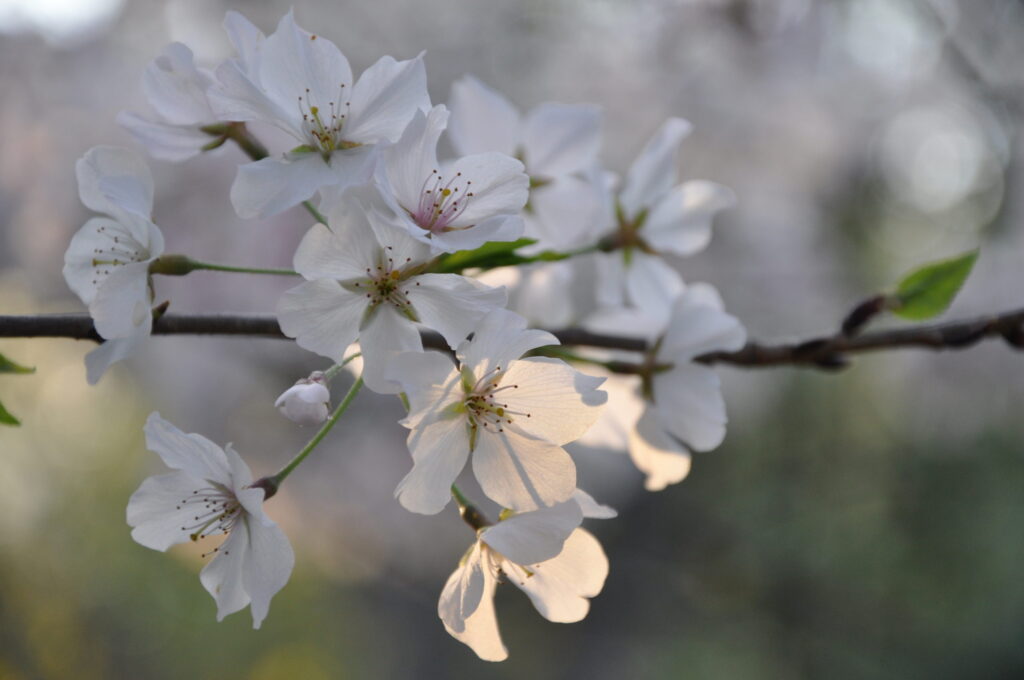In late winter, I watch.
My garden seems silent, but it is not sleeping. Every twig on every branch of each tree and bush work, unnoticed by most.
Together, my trees and I watch as the sun regains its strength. Winter solstice is past. So, the sun begins its journey a bit higher each morning, inching slowly up, reaching toward the increased declination of the soon to come Spring Equinox.
My favorite mountain walks occur on late winter days in the Southern Appalachians. Bare branches reveal seldom-seen vistas, nests of forest critters, and the strong, individual character of each species that digs its roots deep into the forest floor. Deep-ribbed, shag, smooth, or spotted types of bark, scars and oddly shaped galls add defining character to their distinguished years.
On Carolina late winter mornings, my eyes scan the trees that grace the gardens, planted and native, on the plot that we call home. Even from the distance of my window, I will be able to see faint changes beginning. The twigs will start to take on a slight bumpiness. Morning coffee in hand, it is time for a closer check. The buds have begun to swell, but are the green tips showing yet? I walk, wondering, pulling down branches for a closer look.
Daily checks will reveal a slow but predictable process from first bud break until buds are fully open, then bursting into full flowers. Each species follows according to its pre-ordained sequence. First the plums, then Bradford pears, then ornamental cherry trees, redbuds, peaches, apples, other fruit trees, red maples, sugar maples, dogwoods, poplars, to mention just a few. The list goes on. Then the oaks which are dominant in this area will blanket our little world in green pollen dust, leaving green speckles on everything within its reach! Ah-Choo! Ah-Choo!! Ah-Choo!!!
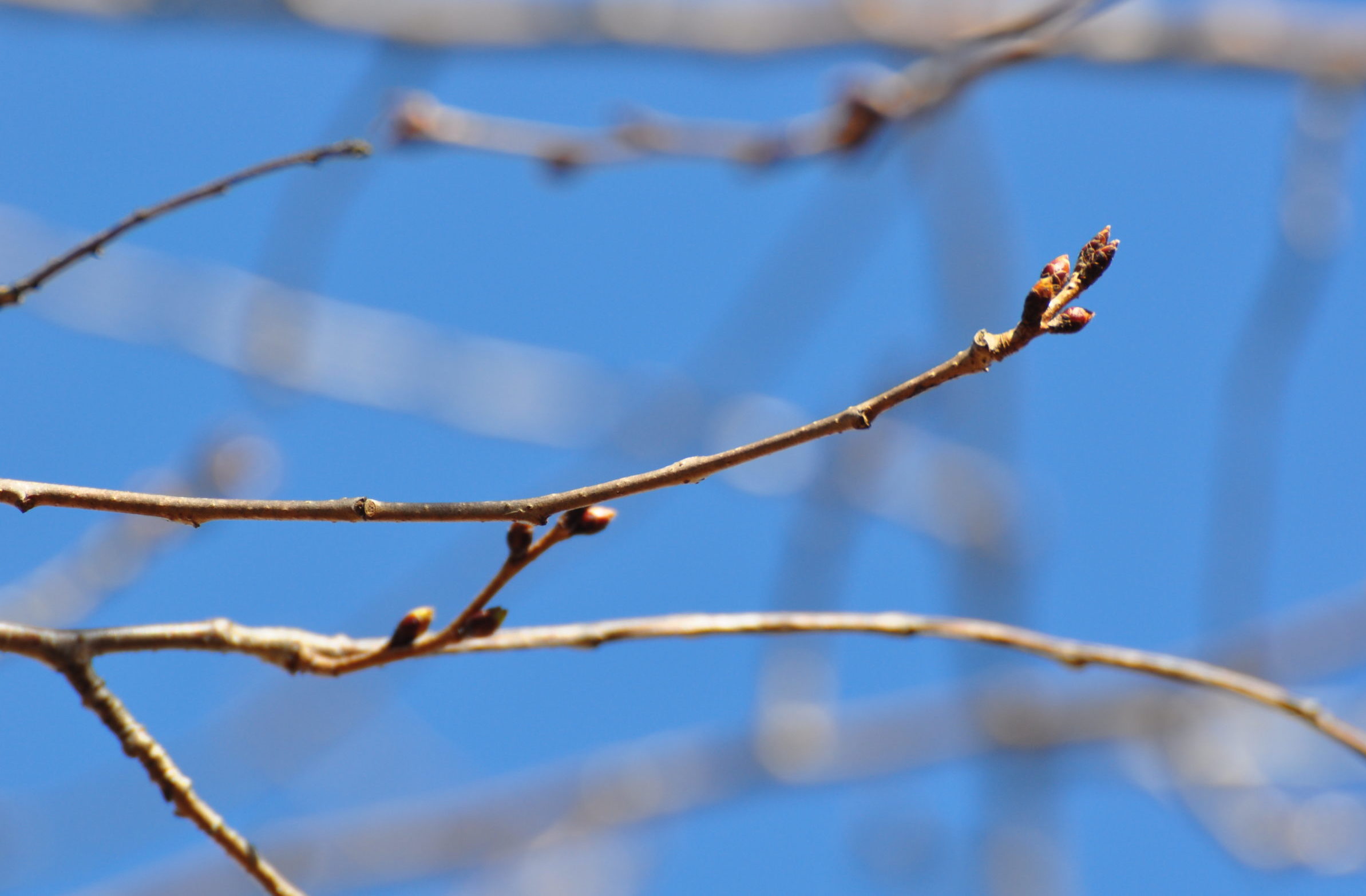
And, it all began with just a bud.
I am captured by a sense of miraculous as I walk through late winter into early spring. In my gardening years, I learned to observe quietly and closely the habits of my own backyard. It is a habit that I cannot escape now, regardless of where I wander in nature. On most hikes, I will be the one lagging along for one more picture of the tiny flower with its curious bug or colorful mushroom amongst a miniature fern forest on a hollowed, decaying log.

Fortunately, this is one habit whose fruit yields a bountiful joy of “wonderment” to my daily life. This is not an accident of temperament; nor is it an armchair activity. However, those who will to wander, whether backyards or wilderness, can learn it. So, don your boots. Bring within yourself an understanding mind that employs all its senses to look and listen, long and well. Consider wisely all you discover. Others have been here before you. Be awed. The Creator’s imprint surrounds you.
And, it all begins with just a simple bud;
But, to catch the wonderment of it all,
you must be watching.
Anticipation grows each morning as I watch, check, and wait, just as in past years. Something special is ahead. It happens but once, and then only briefly, each year. I cannot predict whether it will be one week or two, but hopefully, not three, until…is this sounding silly? I hope you will see that it is not, as you read on. Little buds unfold each new day into full beauty. The plum trees have already peaked. The Bradford Pears began showing out today. Within a week, innocent bystanders will smell them from blocks away. (Not my favorite. Nor are they native, just another invasive species.) Some brave Red Maples spawned a few of their floral seeds a bit early. Daffodils shine out. The Redbuds are begging to burst into vibrant hot pink. Nature rekindles spring’s beauty around me. I can almost taste fresh strawberries and the other Spring fruits that will follow.
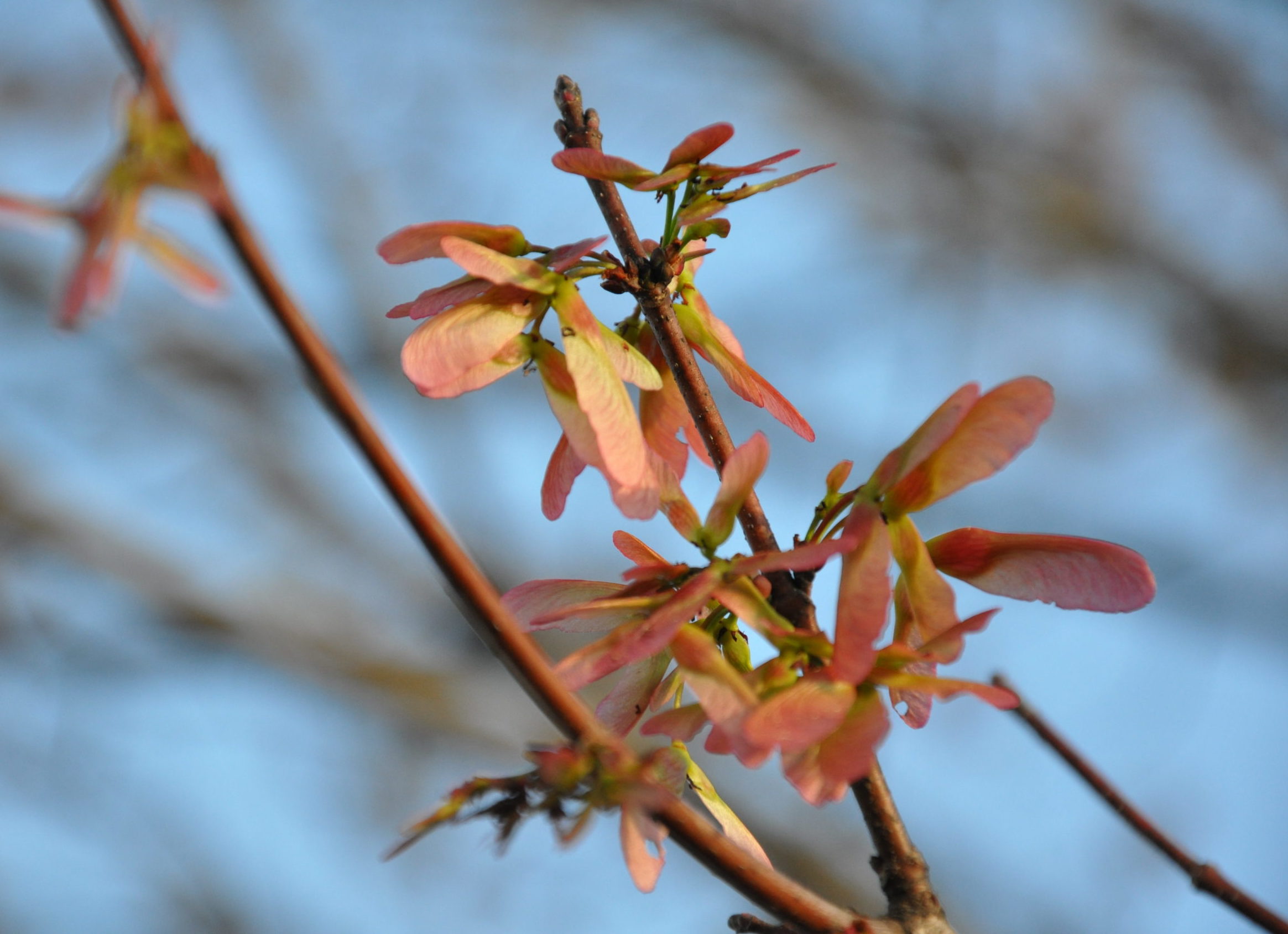
So, I watch. I wait, knowing the potential of each bud, looking forward to the bounty of blooms and fruits. They will all be here soon, but each in their due time. Unless, that is, unless conditions change. The transition from late winter to early spring can be a perilous time for our buds. Jack Frost, their nemesis, is a merciless nipper. The outcome hinges on the timing of a cold front related to the bud’s stage of development. Now, my watch continues with a hopeful eye on the weather while I cheer the buds on!
Because, it all begins with just a simple bud.
But only if it survives.
Enough drama, already! Harsh conditions and bud nipping, is such concern warranted over just simple buds? The trees vote, Yes! You see, they have no back up system. The trees cannot just sprout a few new buds to pull Spring out of the doldrums. They will have to wait until the growing season ahead to start the long process over. Meanwhile, we would be left singing the berry pickin’ and peach cobbler blues.
True, it did begin with making just a simple bud.
However, the buds which I am watching, didn’t just appear one late winter day.
“Make hay while the sun shines,” so says the farmer. Likewise, last growing season, when the sun was at its zenith during days of summer solstice, all nature worked heartily. The next Spring’s beauty was put carefully in place inside tiny buds, some scale-like in appearance, that were “set” along the length (lateral) and at the tip (terminal) locations on twigs, which were attached to small branches, which in turn were attached to main branches of woody plants. The future of each woody plant or tree depends on hearty buds that are slowly nurtured throughout harvest time and winter’s cold until the sun and temperatures rise again to call the buds to bloom.
So, this bud that begins it all, with what does it begin?
Well, there is this tiny collection of undeveloped cells…that emerge…
However, this is no haphazard, random collection. Those tiny, collected cells are coded with meaning and with orderly purpose. Some will become petals, some stamen, some seed, some will enclose the bud in a protective shield. That collection of yet undeveloped cells become the buds that I watch when they emerge on a twig on a branch of a tree drinking in the sun and absorbing water and nutrients from the soil on any given summer day.
Unless…
Unless that process is interrupted by a harsh environment, or damage by insect, animal or human action, each bud will go on to put peaches on peach trees and blueberries on blueberry bushes. Red maple buds will make seeds with wings that float down like spinning helicopters to the ground to do what they do best – feed birds and squirrels who will scatter the seeds to grow more beautiful Red Maple trees whose leaves turn scarlet in the Fall and pleasure us with yet more beauty. Whew!
So far, my buds have weathered one recent snowstorm and a deluge of rain. I am getting impatient now for the big show to start and I have a front-row seat.
Those special buds, as I hinted above, are already spreading open at the very tip. The greenish tip keeps secret the color waiting to blossom. One morning soon I will open my eyes to see a circle of cherry trees ornamented in full, frilly pink. I will quietly step inside the shelter of my favorite garden space and greet the hum of countless honeybees overhead, intoxicated with sweet Yoshina Cherry nectar.
Two short weeks from that day, the time will be perfect to serve tea in my Yoshina Cherry Tree Garden while pink petals snow about us and carpet the ground in mystical pale pink.
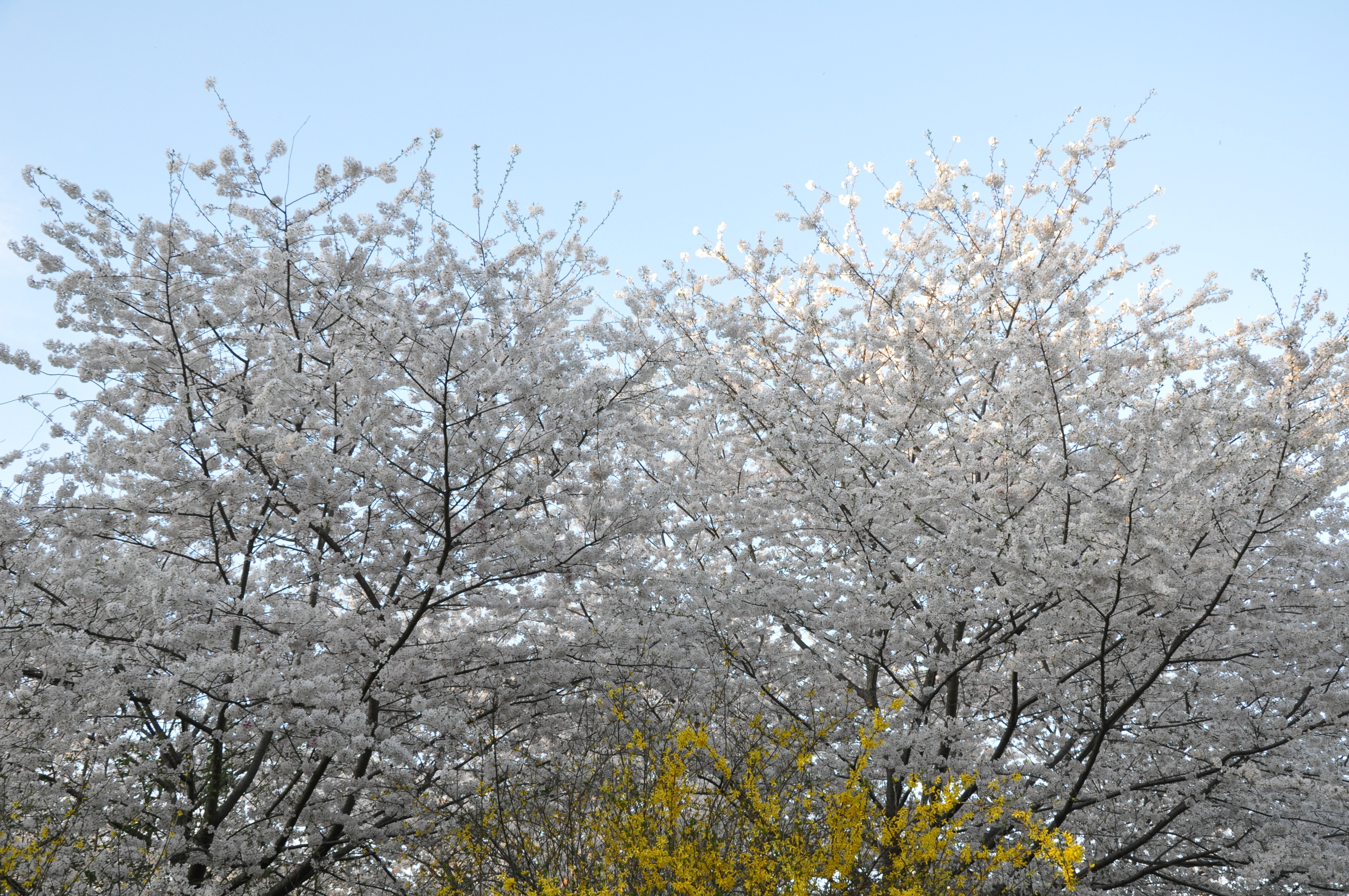
Yes, all this glory began with just a simple bud,
That survived to bring wonderment and joy to my watching eyes.

Earl Grey or Jasmine? One lump or two? Pass the dainties, please. Save the chocolates for the last bite. Miss Kitty will entertain the youngest ladies, each accompanied by their favorite dolly, with stories from afar. We will sip our tea from fine china cups, preserved from an earlier generation, and pat our lips with white linen.
Too soon these little ones grow older. Other enchantments allure them. The dollies will pass down, like the teacups, to younger siblings. Miss Kitty will retire again to her place on the sideboard. But from her perch, she will see the garden still, through the dining room window, and wonder where the pink petals and the little ones have gone.
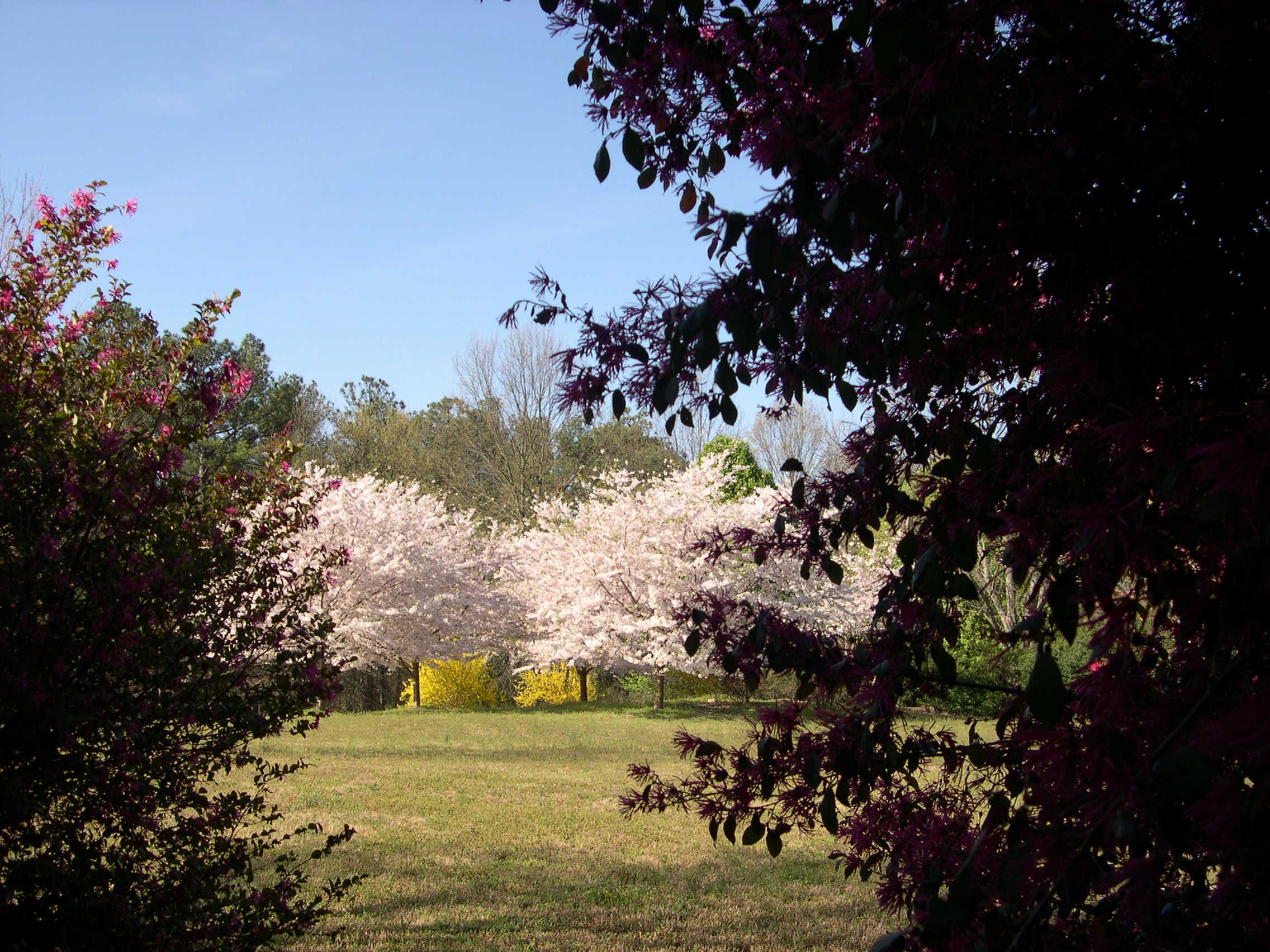

Thanks for reading. Please share!
Susan Millsaps

